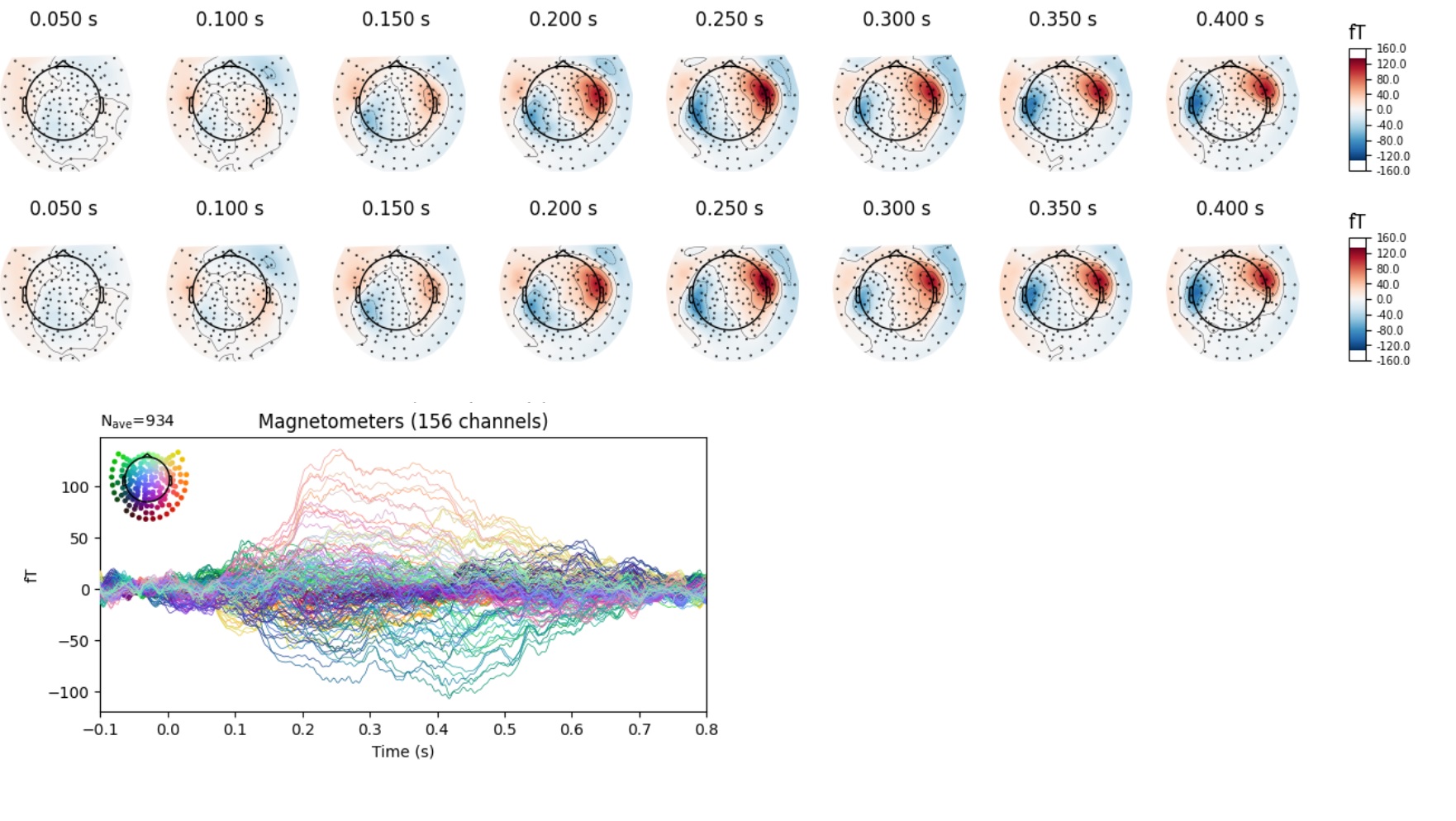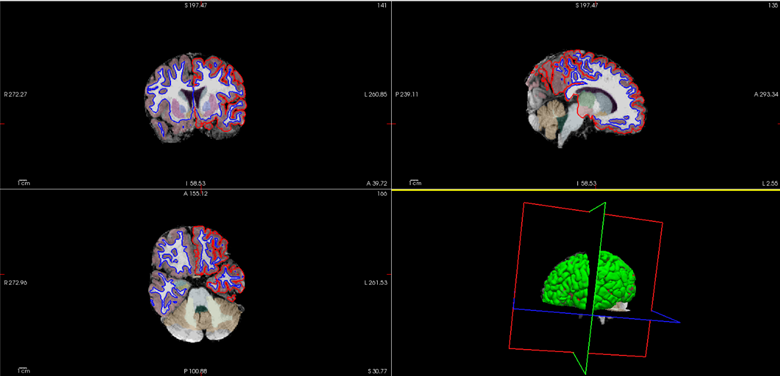
The Effects of Word Frequency, Orthographic Neighborhood and Part of Speech in Word Processing: A MEG Study
By Ruo-Chi Yao
Published on June 7, 2023
June 7, 2023

Project definition
Background
Word processing is influenced by different attributes of words, which can be observed vis brain imaging techniques such as MEG. This project focuses on attributes of words, including word frequency, orthographic neighborhood, and part of speech.
- In word processing, high-frequency words are handled more easily and quickly than low-frequency words.
- An orthographic neighborhood refers to words that are similar to a target word by differing in only one letter (addition, deletion, or substitution of a single letter).
- Part of speech refers to the grammatical category or class that a word belongs to.
We have all learned and understood that various attributes of words impact word processing, whether from textbooks or lectures. However, many of us may not have had the opportunity to obtain evidence regarding this ourselves. The main question here is whether I can find evidence of the influence of word attributes by analyzing a dataset. Therefore, the primary question here is whether I can find evidence of the influence of word attributes by analyzing a dataset.
Tools
The dataset processing by useing mne-python
Methods

- Read & load raw data

- Filter & down sample

- Find event id

- Do artifact rejection & slice the data into epochs

- Working with epoch metadata & visualizing evoked data

Data
Dataset: Auditory single word recognition in MEG – OpenNeuro
- There are files for 18 subjects, but 12 of them can be download successfully.
- 1000 trials for one subject, that is each subject listens to 1000 words.
- There are 97 extra words specifically for semantic probe tasks that involve go/no-go trials.
- Data are recorded using MEG.
Deliverables
At the end of this project, we will have:
- A GitHub repository.
- A markdown document.
- MEG data analysis with MNE-Python.
Results
Frequency effects

Orthographic neighborhood

Part of speech

Conclusion
Frequency effects
- the effect can be seen from 0ms to 200ms and 450ms to 600 ms time window
- in consistence with the result that word frequency effects become stronger and more widespread from 200ms to 300ms and 400ms to 500ms respectively (Dufau et al., 2015)
Orthographic neighborhood
- the effect can be seen after 300ms time window
- in consistence with the result that the effects of orthographic neighborhood size emerge around 280 ms (Dufau et al., 2015)
Part of speech
- the effect can be seen after 250 ms time window
- in consistence with the result that verbs are more negative than nouns about 300 and 1,000 ms (Rösler et al., 2001)
References
- Brysbaert, M., Mandera, P., & Keuleers, E. (2018). The word frequency effect in word processing: An updated review. Current Directions in Psychological Science, 27(1), 45-50.
- Dufau, S., Grainger, J., Midgley, K. J., & Holcomb, P. J. (2015). A thousand words are worth a picture: Snapshots of printed-word processing in an event-related potential megastudy. Psychological science, 26(12), 1887-1897.
- Gaston, P., Brodbeck, C., Phillips, C., & Lau, E. (2023). Auditory word comprehension is less incremental in isolated words. Neurobiology of Language, 4(1), 29-52.
- Marian, V., Bartolotti, J., Chabal, S., & Shook, A. (2012). CLEARPOND: Cross-linguistic easy-access resource for phonological and orthographic neighborhood densities.
- Rösler, F., Streb, J., & Haan, H. (2001). Event-related brain potentials evoked by verbs and nouns in a primed lexical decision task. Psychophysiology, 38(4), 694-703.


